Old house, novel ideas
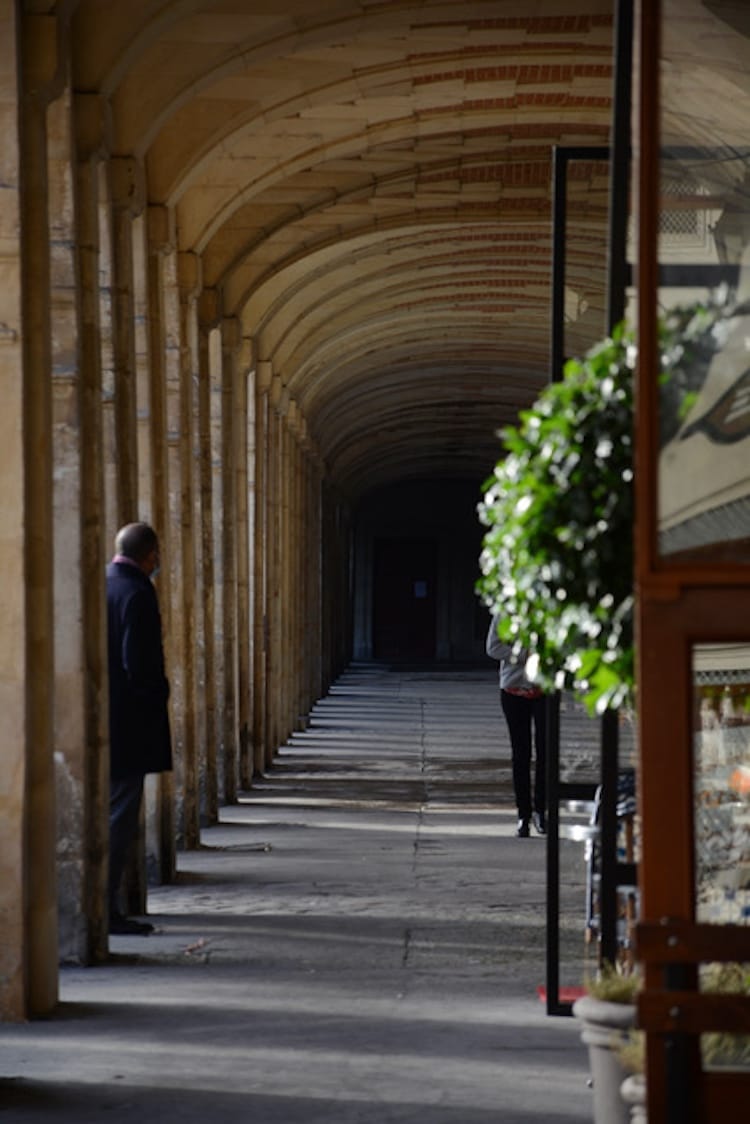
Friday, 5 April
A few weeks ago I visited the place des Vosges. I wanted to see the recently renovated Victor Hugo Museum and the exhibition of his grandson Georges Hugo’s art. But I also like to check in occasionally on this 17th century square, the oldest in Paris, because Civilisation Française, my novel that will be published this summer, is set there.
The museum is housed in an apartment where the great French writer lived from 1832 and 1848. Even before the facelift, its L shape and the view…
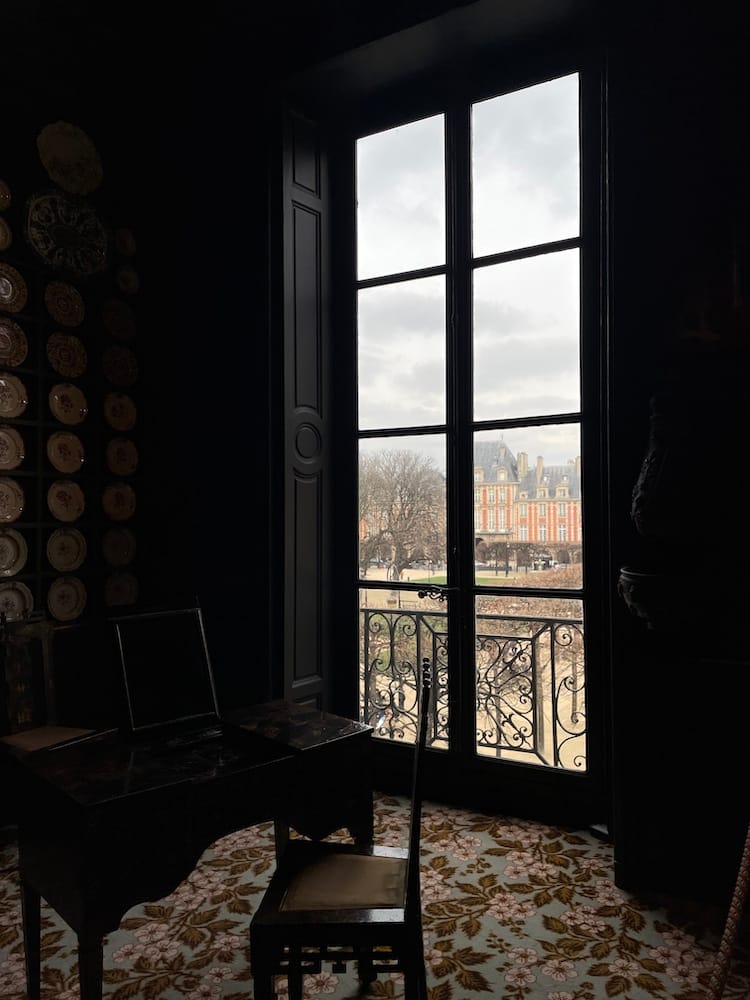
…helped me imagine the perspective of my characters. The apartment looked unchanged to me, but the café on the ground floor-courtyard and the exhibition space upstairs are new. Georges Hugo had a fluid touch…
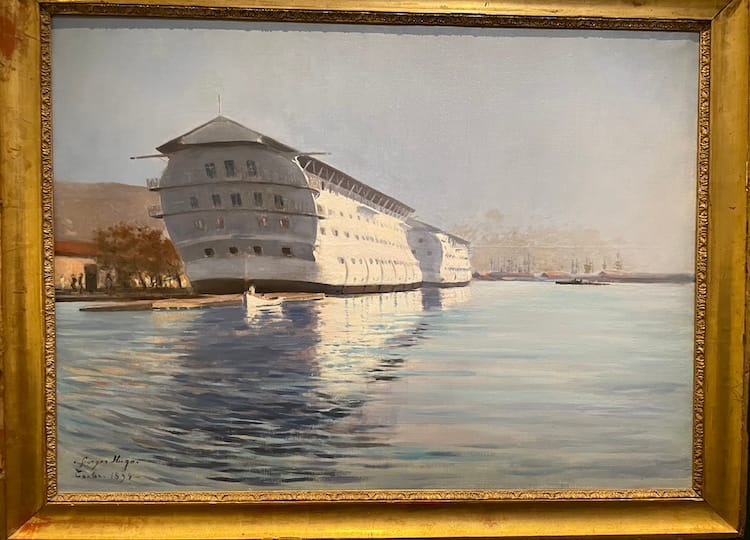
…but it must not have been easy being the grandson of such a towering figure in French life.
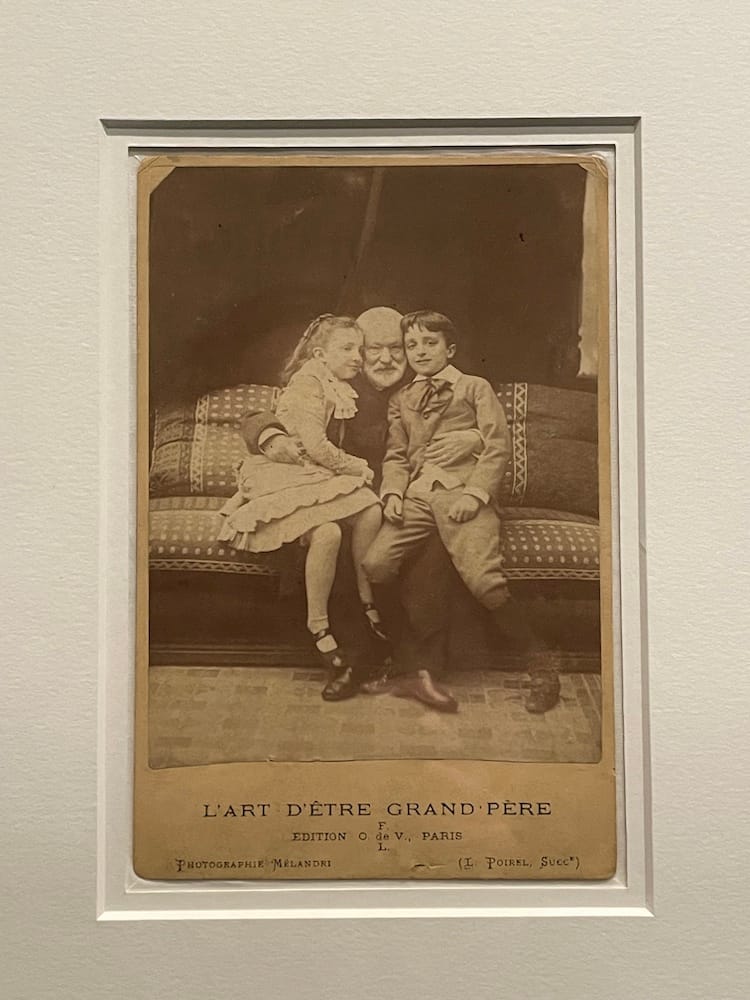
Poor Georges burned through his inheritance and whatever he earned from his art and died penniless at 57.
Like the Hugo family, the place des Vosges has been through boom and bust times. The area started as a swamp (thus the quartier's name, le Marais). In the 12th century, religious orders settled the land; in the 17th, the nobility nosed them out to be near the king, who was constructing the distinctive stone and brick, arcaded buildings of the place Royale, as the place des Vosges was called pre-Revolution. Begun in 1605 by Henri IV, it was finished by his son Louis XIII in 1612, two years after the father's assassination.
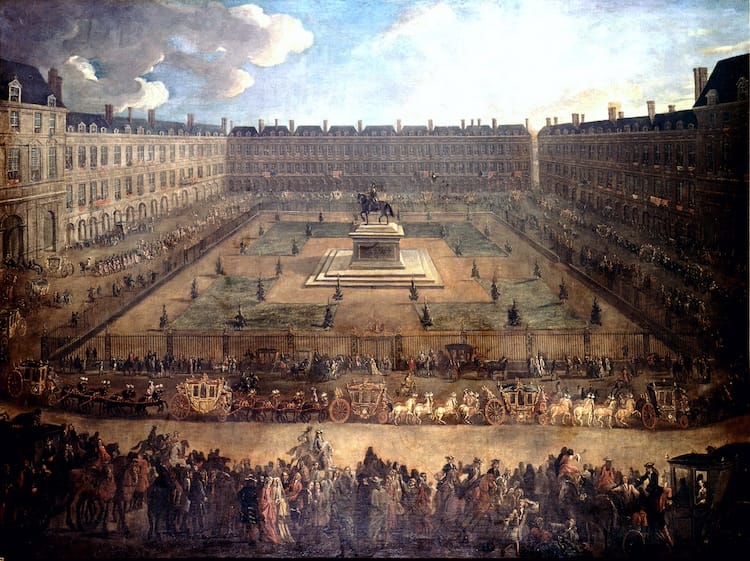
In the 18th century a bored nobility, looking for new sodden pastures to seize, decamped to another former swamp, thus displacing more nuns and monks, in what is now the 7th arrondissement (and that I have also written about). In 1792, the place Royale was renamed Vosges, after the eastern Department of France that was the first to pay its taxes and to send soldiers to defend the new Revolutionary state.
Though illustrious people like Hugo continued to reside on the square through the first half of the 19th century, the Marais then came to be known as the Jewish ghetto. It was a focal point for the notorious Rafle of July 1942, when Jews in the German-occupied city were rounded up by the French police and sent to concentration camps, most never to return. Post-War, the quartier was so old and decrepit there were plans to raze it completely. It was saved at the last minute by the 1962 André Malraux Law, which preserved this area and others of historical significance. Today the Marais is ultra-chic again, though the place des Vosges still bears traces of its long interlude of neglect.
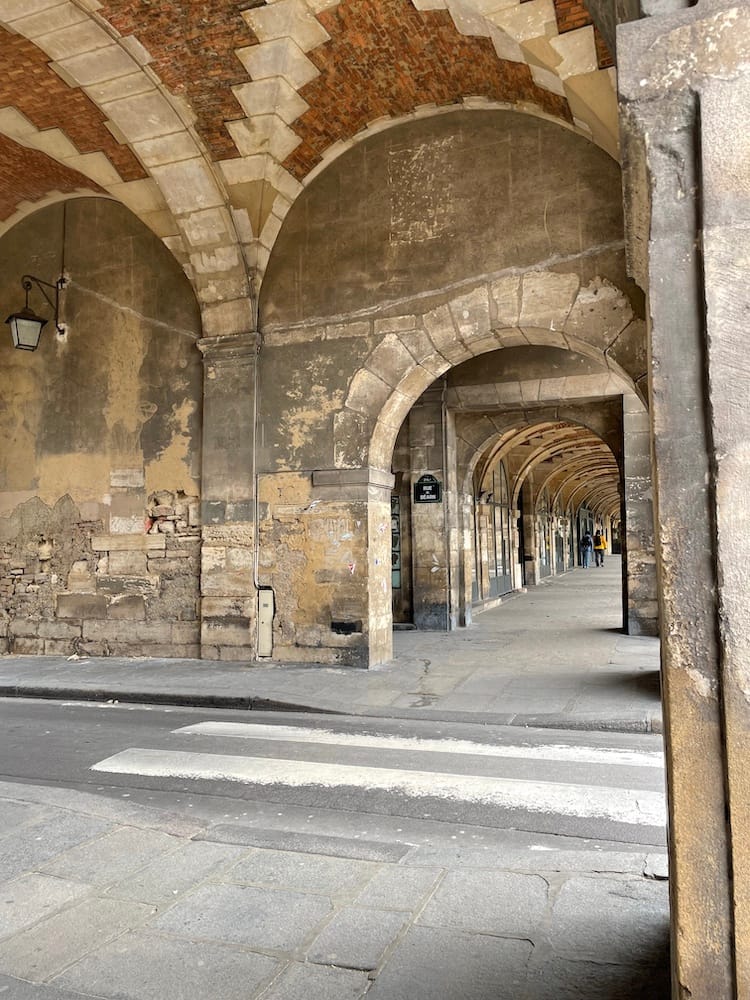
In fact, until recently one building, the Hôtel des Coulanges, birthplace of the femme de lettres Madame de Sévigny, had been standing empty for over 50 years, except for short periods when its many square metres (the exact number is contested - but at least 1500, or 16,145 square feet) attracted squatters. The last occupation, and the one that caught my attention, was by the Jeudi Noir group in 2009-10.
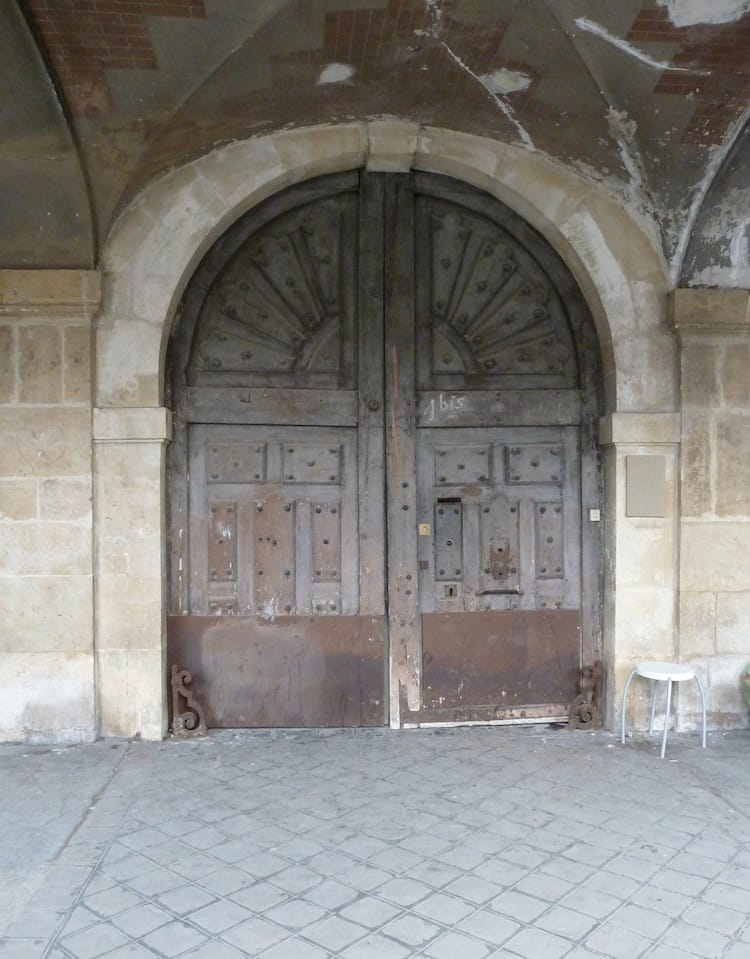
The story of a large, old house inhabited by ghosts piqued my interest, began to grow and metamorphose in my head. I plopped three women into the otherwise empty rooms of my imaginary rendering and moved the action back in time, to the early 1980s, the years I was first in Paris and France was in transition. The Second World War still lingered in the air, tugged at people's consciences. Many lives, such as that of my elderly American expat owner of the house, Amenia Quinon, had been marked if not ruined by it. Ditto for her Jewish housekeeper Germaine. But that era was also the beginning of gentrification, a time of moving beyond the War. Enter our young heroine Lily Owens, hired to live upstairs and provide extra help for Madame Quinon who is losing her sight. Enrolled in the Civilisation Française course at the Sorbonne, Lily sees Paris as the future, a possible path to putting a burdensome childhood behind her.
Without giving away too much of the plot, suffice it to say that the three co-exist, until squatters do come and disrupt their living space, both physically and mentally. Ultimately, the intrusion proves salutary, a catalyst that opens psychological doors and brings the women closer together.
In 2016, the Hôtel des Coulanges was bought by Xavier Niel, one of the richest men in France. He is married to Delphine Arnault, daughter of Bernard Arnault, currently the richest man tout court. The reported price tag for the property was €33 million ($39 million).
Renovation work began a while ago. When I visited the other day, the building was covered in scaffolding that was wrapped in a painted reproduction of the façade and this disquieting photo of a giant, wrinkled brat. Just as bizarrely, the ad is for SFR, a rival telecom company to Monsieur Niel's Free.

I'm not sure where this particular boom time is taking us, but my thanks to the old hôtel and the place des Vosges for being such a rich source of novel ideas.
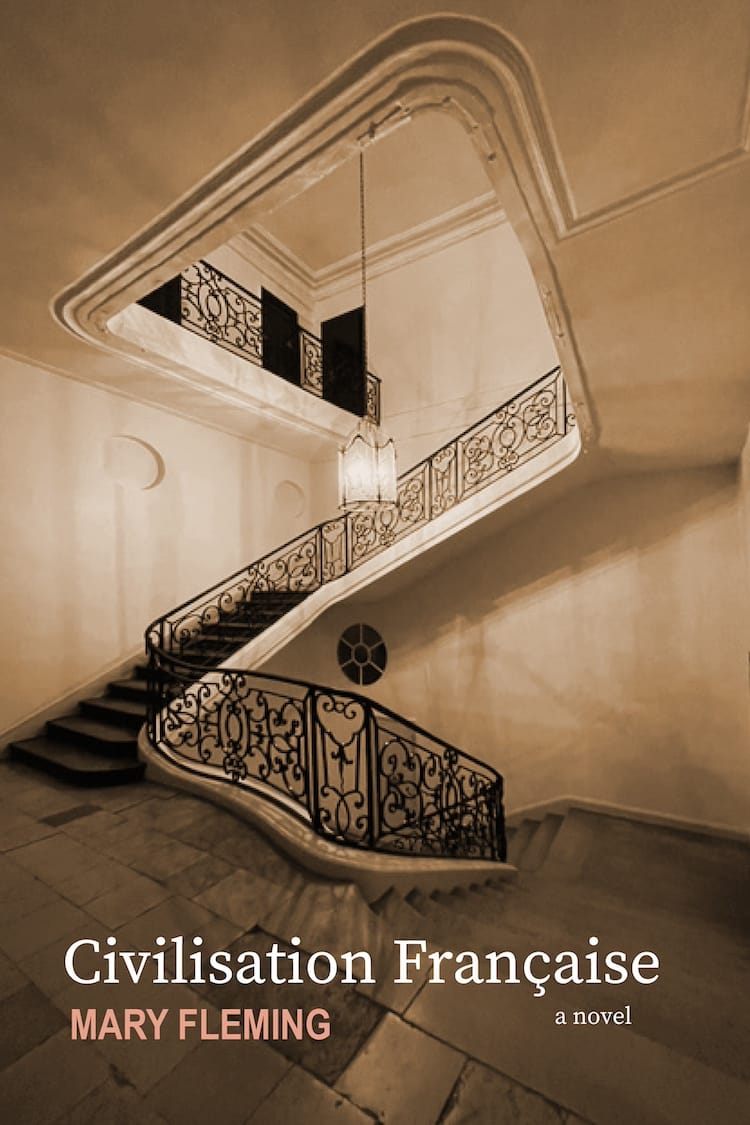
You can visit my website here and follow me on Instagram here